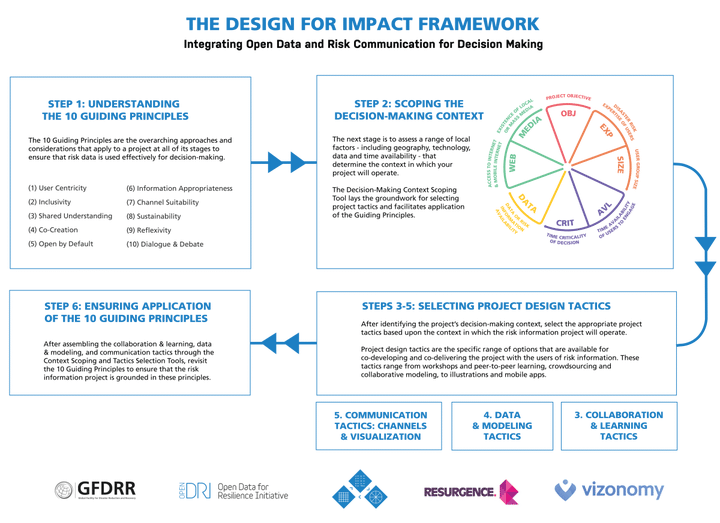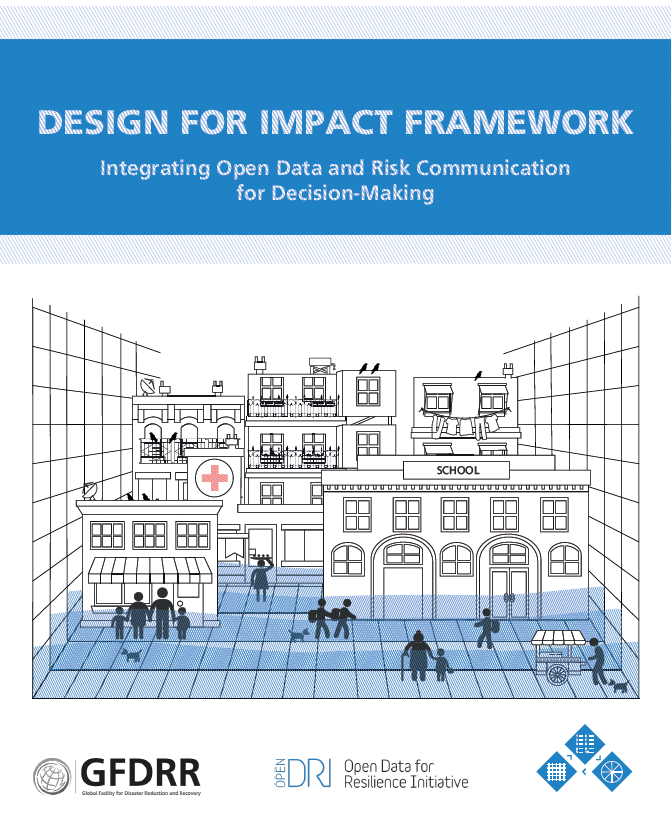Design for Impact Framework: Integrating Open Data and Risk Communication for Decision Making

This project was led by the Global Facility for Disaster Reduction and Recovery (World Bank), Resurgence and Vizonomy, which aims to optimize the use of risk data to guide and support different stakeholders in their decision-making for disaster risk management and climate change adaptation.
The most effective decision-making takes place when it is informed by reliable data. Pillar 3 of the Open Data for Resilience Initiative (OpenDRI) seeks to support the appropriate use of data in decision-making in a range of resilience planning, risk reduction, financing, preparedness, and recovery contexts. OpenDRI does this by supporting the adoption of tools and processes which support engagement, risk visualization, and communication.
Advances in technology are generating unprecedented volumes of data. Governments, international agencies, and scientific institutions are increasingly making their data available to planners, civil contingency managers, and responders as open data. Our knowledge, however, of how best to design projects that take advantage of these new data opportunities to create impact is inconsistent and unconsolidated. A clear and validated framework that relates the capture and analysis of risk data to decision-making is missing.
Design for Impact Framework: Integrating Open Data and Risk Communication for Decision-Making represents a foundational first attempt by OpenDRI to address this challenge. It aims to provide project designers with a framework to guide them in developing projects that have a tight handshake between the development of risk data and real world decision-making. The Design for Impact Framework has its intellectual grounding in a review of academic literature related to risk communication, climate information services, civic technology, citizen science, and design for community resilience. It draws heavily on the guiding approaches and tactics used by over 23 successful projects developed to reduce disaster risk and build resilience in an extensive range of geographies and contexts.
The Design for Impact Framework has its intellectual grounding in a review of academic literature related to risk communication, climate information services, civic technology, citizen science, and design for community resilience. It draws heavily on the guiding approaches and tactics used by over 23 successful projects developed to reduce disaster risk and build resilience in an extensive range of geographies and contexts.
In this project, my responsibilities were as follows:
- Research Lead on OpenDRI initiatives on Risk Modelling, Risk Visualisation, and Risk Communication Projects and the projects submitted by different organizations from all around the world
- Facilitated graphics generation for the Intellectual Framework and Process Diagram and other publication graphics
- Lead Author for Risk Modelling, Visualization and Communication Projects
- Analysed 20+ projects that were submitted from across the globe + OpenDRI projects
- Corresponded and managed relationships with multiple stakeholders - The World Bank/GFDRR, Vizonomy, Project Submitters, DRR and related Community Experts
- Co-developed the narrative and text of the publication.
